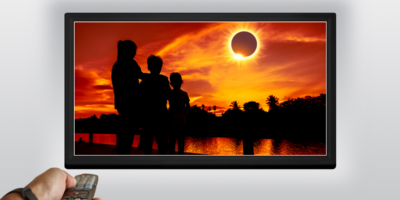Let me start by saying that I wrote a much more “politically correct”, academic and verbose version of this article. It started off with a disclaimer that this isn’t about the tiresome #teamdarkskin vs. #teamlightskin Twitter battles, and even mentioned the historical context of colorism. It then evolved into – as one editor friend so nicely put it- [an article about a] “possibly insecure girl complaining about her inner feelings of exclusion”. While that seems harsh, it was an honest and necessary critique. I wanted to write an anecdote about colorism in Haitian society but felt the need to spare other people’s feelings. I didn’t want anyone to interpret my words as some sort of battle cry for all dark skin women in Haiti to pick up arms, so I talked about how I felt growing up. But in doing so, I was dishonest and excused a societal norm by using my teenage insecurities as a scapegoat. This is the more honest version.
Recently I was scrolling through the Instagram page of this popular restaurant in Pé
Now before we call in the protest squad, let me say that this restaurant isn’t unique in their marketing strategy. Frankly, they were being honest about what’s reflected in Haiti’s upper echelon. If you’re a member of the Haitian diaspora, buy an [outrageously] expensive ticket to come to Haiti for the holidays, then purchase an [even more outrageously] expensive ticket to a party or pwogram and look around. Odds are, if you look like me, aka dark skin, it may seem like you’re in the minority. If you have natural hair or tèt grenn, then forget about it. You’re basically a pauper who somehow got invited to the prince’s ball and clearly doesn’t fit in.
Here’s what you might observe. You might notice a sea of beautiful, fair to light brown skin, men and women dressed to the nines, pulling up in expensive vehicles. You may notice that these beautiful people are buying overpriced drinks with mommy and daddy’s money. You may also notice that they’re [probably] 16. Because [most] people over the age of 21, don’t/shouldn’t pay $20 for a well drink. So newsflash, you’re being ripped off! (PS: a well drink is a drink made with bottom shelf liquor, meaning the cheaper stuff. Just in case you didn’t know)
And honestly, as I get older, being at those parties feels like a scene straight out of Mean Girls, where Regina George is the “fair skin girl” telling you that you can’t sit with them. Again, this isn’t an attack on people who have fairer skin but a commentary on Haitian cultural norms. After all, we are a product of this society (and the legacy of slavery) which continuously tells women that straight hair, light skin = better. I mean, how sad it is that hair salons on a PREDOMINANTLY BLACK island are often not equipped to deal with natural hair? I’m still trying to grow out the heat damage from the last time I made the mistake of trying to get my hair done at home.
Now, I would be remiss and inaccurate to say that this is problem unique to this restaurant or to Haiti. Colorism exists in India, Jamaica, Pakistan, China, the United States etc… It’s also compounded by social status. Historically, fairer skin was associated with rich people because it meant that they didn’t have to labor in the sun all day. In part, that’s also true of Haiti. If you look at the “
Obviously, my diatribe has barely scratched the surface of the issue of colorism in Haitian society. Frankly, this was more of a snarky overview of one example of social privilege and colorism, brought on by wasting too much time on social media. People have probably written entire doctoral dissertations on the topic. And if they haven’t, they should. I even have a title suggestion, “Shades of Brown: An exploration of the intersection of social status, privilege and skin tone among Haiti’s elite” (Just make sure to properly credit my contribution to your PhD).
But for real, flippant anecdote aside and with the holiday season upon us, I am once again reminded of the peacock display that awaits my 2-week stay at home. During which time I will be reminded that myself (and another several billion people) are a less desirable hue of Brown. I might even hear: “Pitit, gad jan w’ vinn nwa”. I’ll just have to take a deep breath, very discreetly roll my eyes and mumble, “Fix it Jesus!” And who knows? Maybe an overzealous tourist will snap a picture of a dark skin person actually eating at this posh restaurant and expose the







Comments